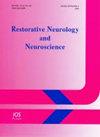“How learning doesn't work” Children evaluate their cell phone use – An empirical pilot study
IF 1.6
4区 医学
Q4 NEUROSCIENCES
引用次数: 0
Abstract
In our increasingly digitally organized society, we enjoy great benefits from easier working conditions and the acceleration of developmental processes. Children are expected to be prepared for this and to receive a tablet or cell phone as early as possible. This, however, poses a huge risk because a child’s brain must initially organize itself in an analog fashion. This means that the spatial-modular building of neural networks and the rhythmic timing of brain activities mature very slowly through upbringing and school education to support memory formation and thinking. Once this foundation has been established, a digital workplace will be easily accessible to any young adult. To investigate in more detail the impacts of private cell phone use on the learning abilities of children, we designed a cognitive test that, among other things, measures spatiotemporal abilities and memory performance. A total of 54 third-grade students (aged 8 and 9) were subjected to the testing at an elementary school in the Rhein-Neckar-Kreis/Baden Württemberg region from December 2019 to March 2020. The intensity of private cell phone use was measured with a nonverbal method, the evidence-based water glass method. Prior to testing, we evaluated the children’s ability to evaluate themselves with this nonverbal method and designed a lie item, which allowed us to filter out those children who were unable to evaluate themselves. Due to the high data quality, variance analysis was used to analyze the quantified data statistically. The results showed that prefrontal cortex skills such as spatial perception, concentration, and anticipation were significantly poorer in third-graders with heavy cell phone use compared to those with little or no cell phone use. The heavier the cell phone use, the less well developed was their cognitive memory performance if it included a time delay. Furthermore, we observed a significant impact of the intensity of cell phone use on the motivation to go to school. The frequency of sports activities, playing outdoors, friendships, and homework was not significantly affected by cell phone use. The reason for this could be that modern schoolchildren only have rather limited control over the timing of these activities. Overall, the data suggest that other cognitive and emotional-motivational abilities such as spelling and handwriting are also adversely affected by heavy cell phone use. This could be verified by an investigation with a larger sample size. The findings of this pilot study should be a warning: with the digital transformation, our society could cause severe and also irreversible cognitive damage to the young generation. The discussion shows that brain research findings from the past half century provide comprehensive evidence for this“学习是如何不起作用的”儿童评估他们的手机使用-一项实证试点研究
在我们日益数字化的社会中,我们享受着更便利的工作条件和发展进程的加速带来的巨大好处。孩子们应该为此做好准备,并尽早获得平板电脑或手机。然而,这带来了巨大的风险,因为儿童的大脑最初必须以模拟方式组织自己。这意味着,通过成长和学校教育,神经网络的空间模块化构建和大脑活动的节奏性时间非常缓慢地成熟,以支持记忆的形成和思考。一旦这个基础建立起来,任何年轻人都可以很容易地进入数字工作场所。为了更详细地研究使用私人手机对儿童学习能力的影响,我们设计了一个认知测试,除其他外,还测量了时空能力和记忆表现。从2019年12月到2020年3月,共有54名三年级学生(8岁和9岁)在莱茵-内卡尔-克赖斯/巴登符腾堡州的一所小学接受了测试。使用私人手机的强度是用一种非语言的方法测量的,即循证水杯法。在测试之前,我们用这种非语言的方法来评估孩子们评估自己的能力,并设计了一个谎言项目,这样我们就可以过滤掉那些无法评估自己的孩子。由于数据质量较高,采用方差分析对量化后的数据进行统计分析。结果显示,与很少或不使用手机的三年级学生相比,大量使用手机的三年级学生的前额叶皮层技能(如空间感知、注意力和预期)明显较差。手机使用越频繁,如果包含时间延迟,他们的认知记忆表现就越不完善。此外,我们观察到手机使用强度对上学动机的显著影响。体育活动、户外活动、友谊和家庭作业的频率不受手机使用的显著影响。造成这种情况的原因可能是现代学童对这些活动的时间只有相当有限的控制权。总的来说,数据表明,其他认知和情感激励能力,如拼写和书写,也会受到大量使用手机的不利影响。这可以通过更大样本量的调查来证实。这项初步研究的结果应该是一个警告:随着数字化转型,我们的社会可能会对年轻一代造成严重且不可逆转的认知损害。讨论表明,过去半个世纪的大脑研究成果为这一点提供了全面的证据
本文章由计算机程序翻译,如有差异,请以英文原文为准。
求助全文
约1分钟内获得全文
求助全文
来源期刊
CiteScore
5.40
自引率
3.60%
发文量
22
审稿时长
>12 weeks
期刊介绍:
This interdisciplinary journal publishes papers relating to the plasticity and response of the nervous system to accidental or experimental injuries and their interventions, transplantation, neurodegenerative disorders and experimental strategies to improve regeneration or functional recovery and rehabilitation. Experimental and clinical research papers adopting fresh conceptual approaches are encouraged. The overriding criteria for publication are novelty, significant experimental or clinical relevance and interest to a multidisciplinary audience. Experiments on un-anesthetized animals should conform with the standards for the use of laboratory animals as established by the Institute of Laboratory Animal Resources, US National Academy of Sciences. Experiments in which paralytic agents are used must be justified. Patient identity should be concealed. All manuscripts are sent out for blind peer review to editorial board members or outside reviewers. Restorative Neurology and Neuroscience is a member of Neuroscience Peer Review Consortium.

 求助内容:
求助内容: 应助结果提醒方式:
应助结果提醒方式:


